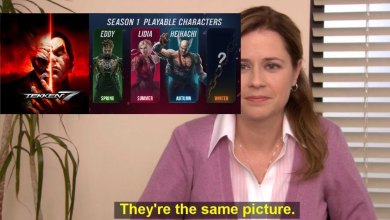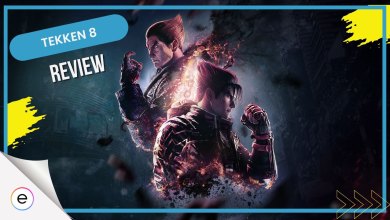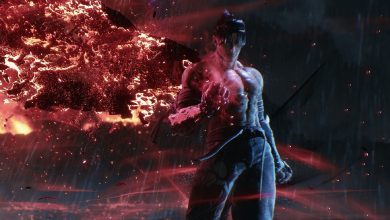Story Highlights
- Bandai Namco will feature a closed network test for Tekken 8 this month. The closed network test will be held in two batches.
- The first batch, from July 21 to July 24, will be available for PlayStation 5 players only. While the second batch, from July 28 to July 31, will be available for Xbox Series X|S, Steam, and PlayStation 5 players.
- This will be the first time we’ll be able to see Tekken 8’s netcode and crossplay features in action.
- The quality of Tekken 8’s netcode will drastically affect its success in the coming days compared to its rival fighting games.
After Street Fighter 6’s launch, which can only be regarded as a full-fledged success, all eyes are on Tekken 8 for what it will deliver. Tekken 8 was first teased at EVO 2022 and was later properly announced via a trailer during the State of Play event in September 2022. While the game’s release date has not been announced yet, the character reveal trailers and the upcoming closed network test are a sign that Tekken 8 is just around the corner.
We’ve already got plenty of local Alpha tests at different venues around the world for Tekken 8. But, for the first time, Bandai Namco is hosting a closed network test for Tekken 8. The closed network test would be held in two batches. The first batch is only for PlayStation 5 players, starting from July 21 to July 24. While the second batch will be for Xbox Series S, Xbox Series X, Steam, and PlayStation 5 players, starting on July 28 and ending on July 31.
Since all the Alpha tests were only available for players physically present on the venues, the upcoming closed network test will be the first time we see Tekken 8’s netcode in action. And if you’ve been playing Tekken 7, you’d know how scary and exciting it can be. Tekken 7’s P2P netcode is pretty bad by modern standards, and if Tekken 8 features a similar netcode, fans will have to suffer for another decade or so until the next iteration comes out.

But how can Tekken 8 fix these issues that have been plaguing the franchise for about a decade? How can just simply changing the netcode would affect the fate of the game and its player base? How will it affect the competitive scene, and what will it mean for the casuals? We’ll be answering all these questions, so stay with us.
What Is Netcode In Fighting Games?
Couch multiplayer and offline games aside, whenever you play a fighting game with anyone online, the thing connecting you both together is called a netcode. It is a type of communication that displays your opponent’s movements and other details on your screen and synchronizes the game state for both players during online play, ensuring smooth gameplay in an ideal situation.
The type and quality of netcode are especially important in fighting games because, most of the time, you have to make quick and precise inputs. If there is any non-negligible delay in inputs getting recorded by the game server, it is likely that whatever you’re trying to do in the fighting game won’t come out as planned, resulting in a terrible gameplay experience for both players.
Most 2D fighting games feature rollback netcode. Rollback netcode essentially predicts each possibility of what the players are going to do next. It predicts everything and displays what it deems the most likely outcome. However, if the actual input is any different from the predicted outcome, the game will revert or roll back to the actual input’s outcome in an instant.

This type of netcode improves the fighting game experience as a whole. You can play with people across the continent without experiencing any game-breaking lag or delays. The recently launched Street Fighter 6 also features a high-quality rollback netcode. You can play with people sitting on the other end of the world without much lag.
If you want to learn more about how the rollback netcode works, there’s a highly informative visual representation by Muno, which explains everything that you should know about what the rollback netcode is and how it is implemented in fighting games.
Everything Wrong With Tekken 7’s Netcode
Tekken 7 features a type of Peer-2-Peer (P2P) netcode. In layman’s terms, when you and your opponent are playing together, there is no server; you share the same connection. Since both of you are sharing a connection, if either one of you lags, the game will slow down to the point of being unplayable. The distance between you and your opponent also plays a significant role in determining your latency in a p2p connection.
The P2P connection of Tekken 7 also requires you to use an open or moderate NAT type, also known as NAT Type 1 and 2. If you’re using closed NAT or NAT Type 3, which is also the most secure one, you will experience lag and won’t be able to find matches as frequently in Tekken 7.
With all these issues and the ancient P2P netcode, playing Tekken 7 with anyone that lives a bit far from your location can be an extremely annoying experience due to all the lag and delay. Additionally, Tekken 7 is a 3D fighting game, and unlike 2D games, implementing rollback netcode isn’t easy. Tekken’s Director, Katsuhiro Harada, said himself back in 2020 that implementing rollback netcode in Tekken 7 causes problems with the 3D animations.
No, in fact there is rollback (everyone talks rollback without knowing it). But the difference is whether the rollback frame is 1 or 6 (TK7 is 3). Increasing this number is more ideal, But causes problems with 3D animation. We’ve already working on this.https://t.co/SxfLohDRGZ
— Katsuhiro Harada (@Harada_TEKKEN) June 10, 2020
Basically, in 2D games, when the developers implement rollback netcode, they have to map out every possibility in a 2D plane, but in 3D games, it becomes more challenging since the netcode now has to predict every possible action in a 3D plane.
The inability to play with or against people that live a bit far from you is the only thing holding back the game currently compared to other fighting games. From a competitive point of view, the netcode doesn’t matter much since most tournaments are held offline. However, if it comes to playing against players of a specific region that is far from your location, it is next to impossible to play online against them unless you physically visit the region.
The terrible netcode affects the casual players the most. Fighting games usually have a lower player base compared to other competitive eSport titles. If you’re from a region where Tekken isn’t really that popular, you’ll have a hard time finding any matches with stable ping, which ends up becoming a barrier between many players trying to buy and play the game casually.
There is one more issue, which is quite prominent in many fighting games, and that is disconnecting and rage quitting. Tekken 7 doesn’t punish the players as harshly as it should for disconnecting from matches. However, sometimes the players aren’t exactly to blame since Tekken 7’s netcode is so terrible, the game sometimes desyncs on its own.
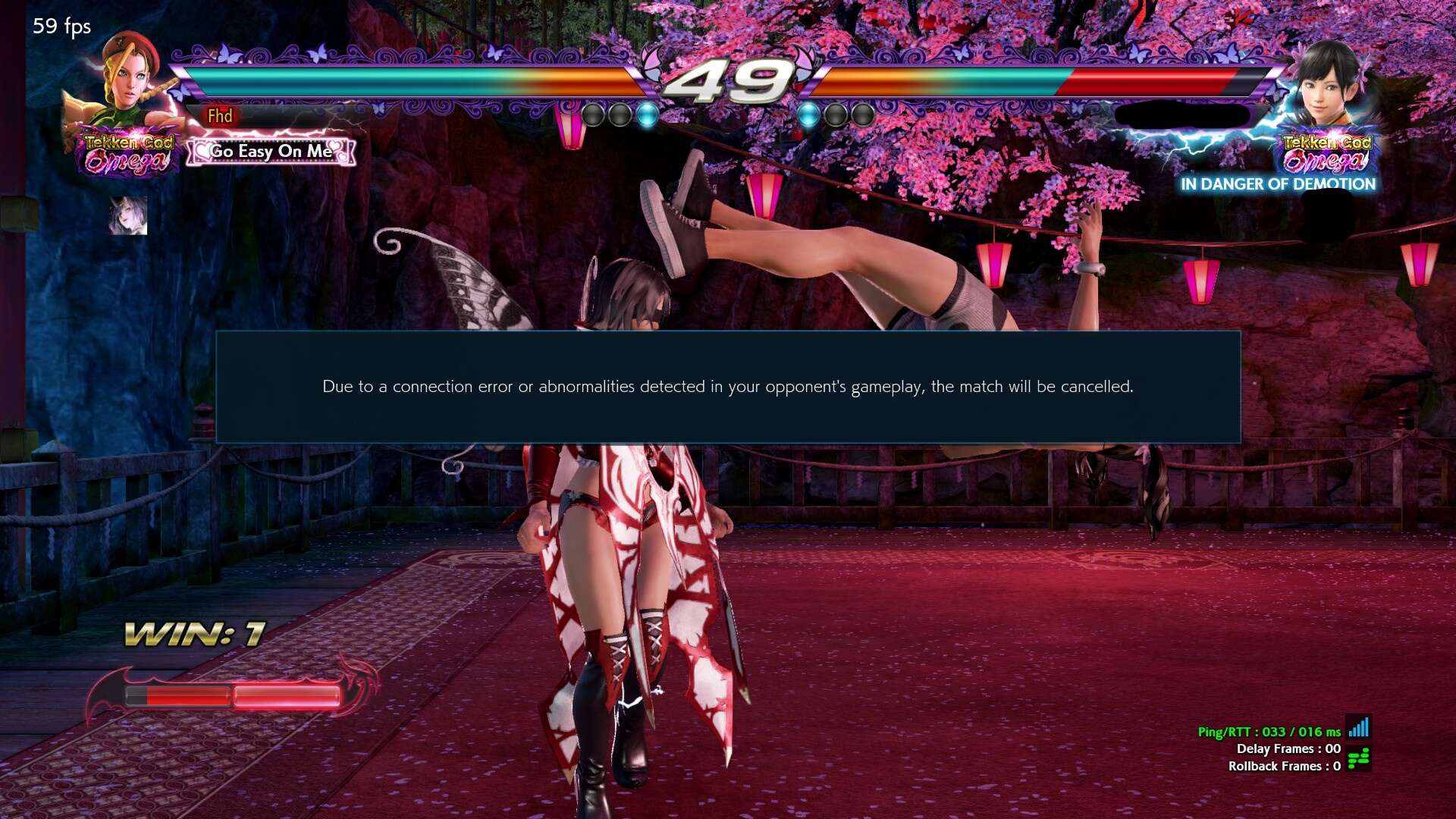
Hopefully, Tekken 8 will be bringing better online play and an appropriate punishment for people who disconnect on purpose. These types of events make the game’s already terrible online matchmaking even further toxic for veterans and newer players alike.
How Will The Network Test Decide Tekken 8’s Fate
With the upcoming closed network test, we’ll see Tekken 8’s netcode in action for the first time. Harada has already confirmed in a tweet that Tekken 8 will feature rollback and crossplay. While it is likely that we’ll see something different from Tekken 7 this time around, the question is, how different? Tekken 8 will have to feature smooth online play if it wishes to compete with the likes of Street Fighter 6 and the upcoming Mortal Kombat 1.
Bandai Namco has officially partnered with Arika, a company that developed and published Fighting EX Layer. Arika will be working on Tekken 8’s netcode, and judging from their past accomplishments and their work on Fighting EX Layer; it is safe to assume that Tekken 8’s netcode is in good hands.
From what we’ve seen so far, the character trailers, and the Alpha tests, Tekken 8 looks and feels absolutely amazing. It is a massive upgrade from its predecessor, which is to be expected since it is being made using Unreal Engine 5. The only thing that can turn this game into a flop is a laggy online play because none of the visuals matter if you can’t play the game online normally against someone that doesn’t live next door.
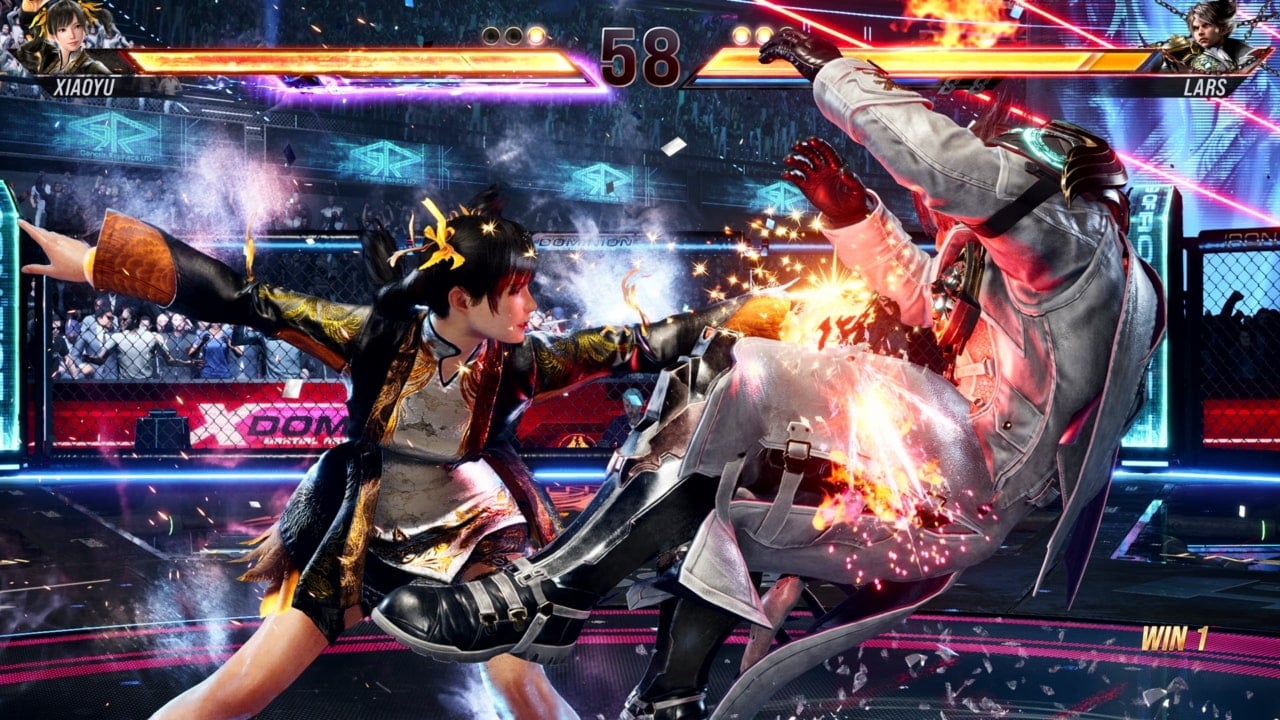
While it may not have that much of an effect on competitive play, it will drastically affect casual gamers. Tekken 8 is trying its best to be as beginner-friendly as possible to attract new players, but what will these players play if the online play is as messed up as Tekken 7’s? In an age where you can play online against anyone worldwide, as you do in Street Fighter 6, a game that can’t offer such a basic need is bound to fail.
Additionally, the closed network test will bring a few changes to the new “Heat” gameplay mechanic. The closed network test will be the first testing grounds for these changes and will play a significant role in deciding how Bandai Namco decides to shape the new Heat mode for Tekken 8. Furthermore, the participants will also be able to take part in ranked matchmaking.
The closed network test will give us a better idea of what to expect from this upcoming iteration of the long-running Tekken franchise. It will answer if our days of suffering from Tekken 7’s miserable netcode are finally over or if the suffering will continue for likely a decade more. Franchise veterans like myself would, of course, buy the game even if the netcode is terrible, but as for Bandai Namco’s goal of attracting a new audience, that won’t be easy.
Takeaway
Tekken 8’s closed network test is just around the corner, and it will give us insight into what the final product is going to be like and if it will be any similar to Tekken 7’s terrible netcode where you can’t play smoothly with anyone that lives a little far away from you geographically.
Katsuhiro Harada and Bandai Namco have shown a lot of promising stuff for Tekken 8 so far, but all of it will be meaningless if the online play is messed up. In order for the game to succeed and compete equally with other modern fighting games, such as Street Fighter 6 and the upcoming Mortal Kombat 1, the game will have to do a lot more than just be visually appealing.
From what we already know, it is safe to assume that we’ll be seeing some positive changes in Tekken 8’s netcode compared to how it was for Tekken 7. But we’ll just have to wait and see for ourselves. Tekken 8 will be featuring crossplay for the first time as well, and with that, there will be many players using a Wi-Fi connection, which is not something that’s proudly looked upon in the fighting game community, but if the netcode is good enough, nothing else would matter that much.
Thanks! Do share your feedback with us. ⚡
How can we make this post better? Your help would be appreciated. ✍
